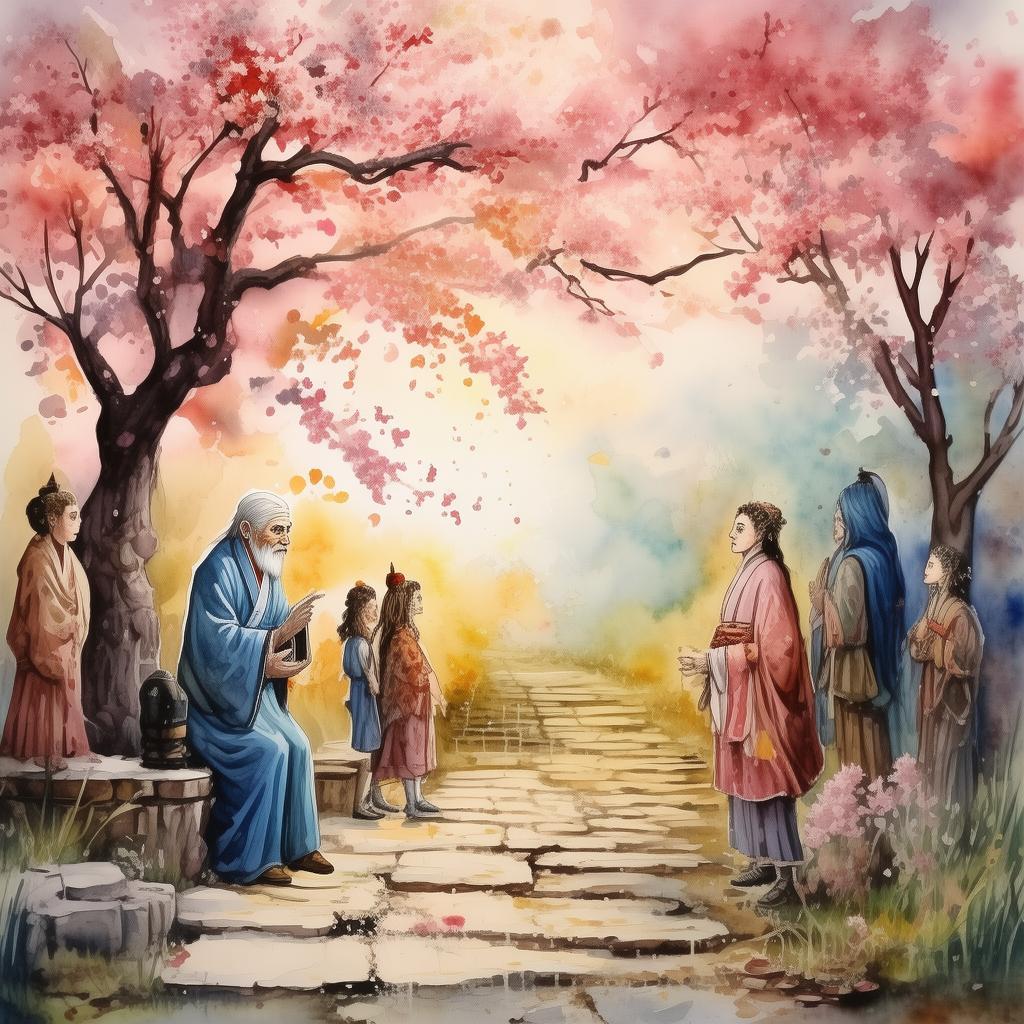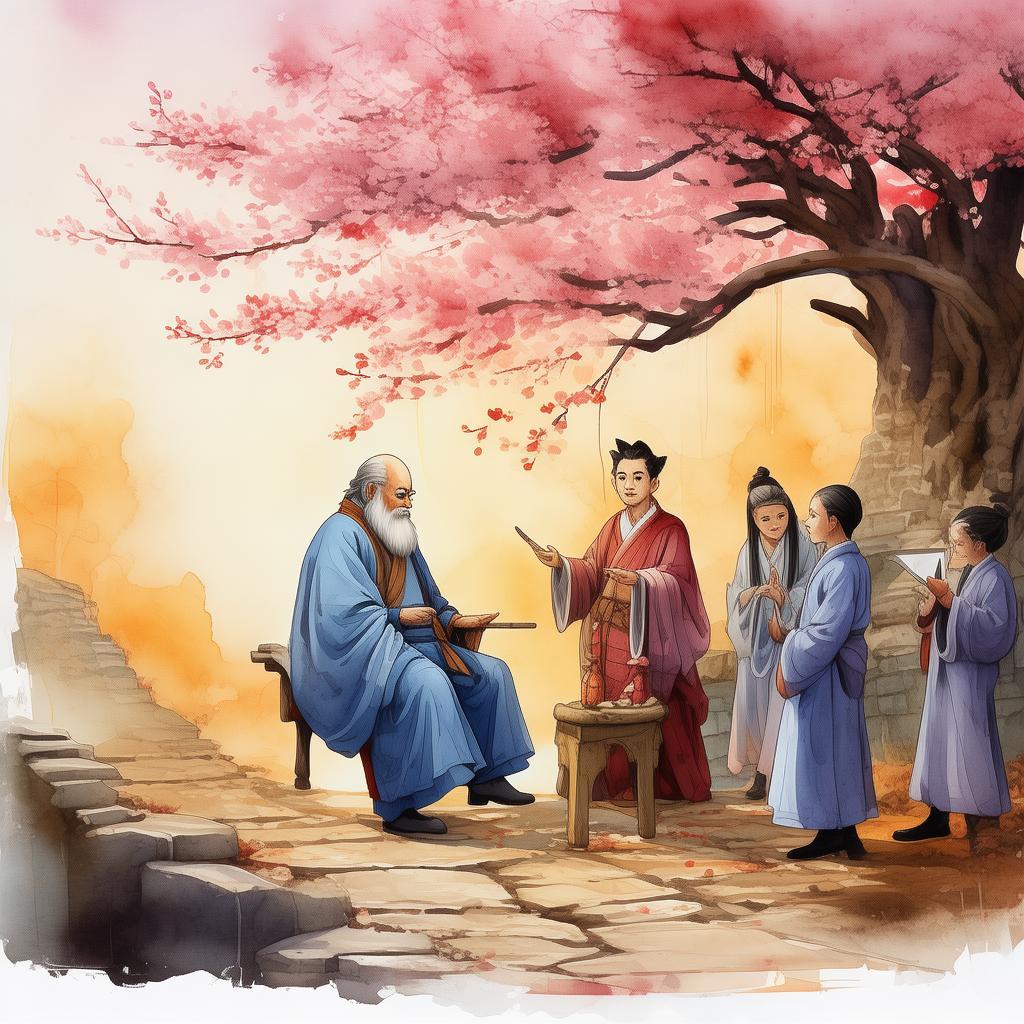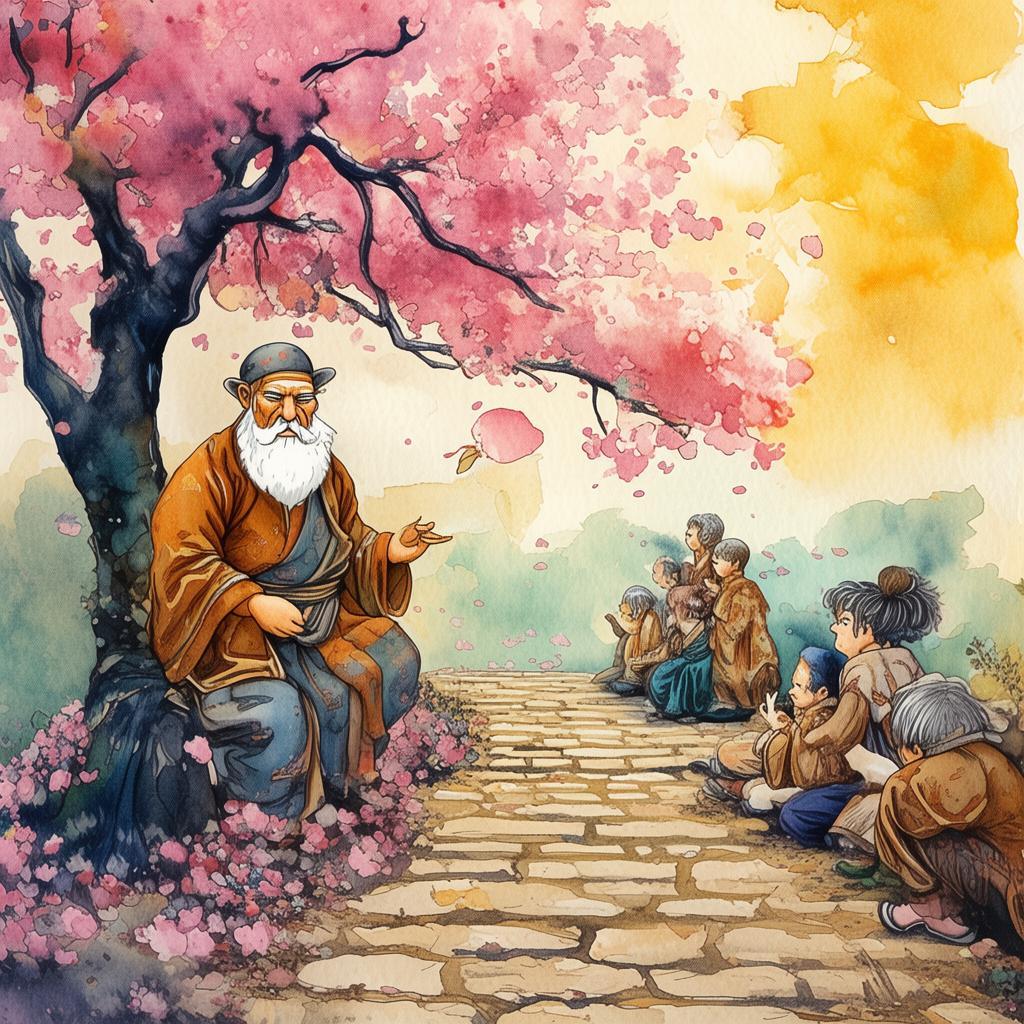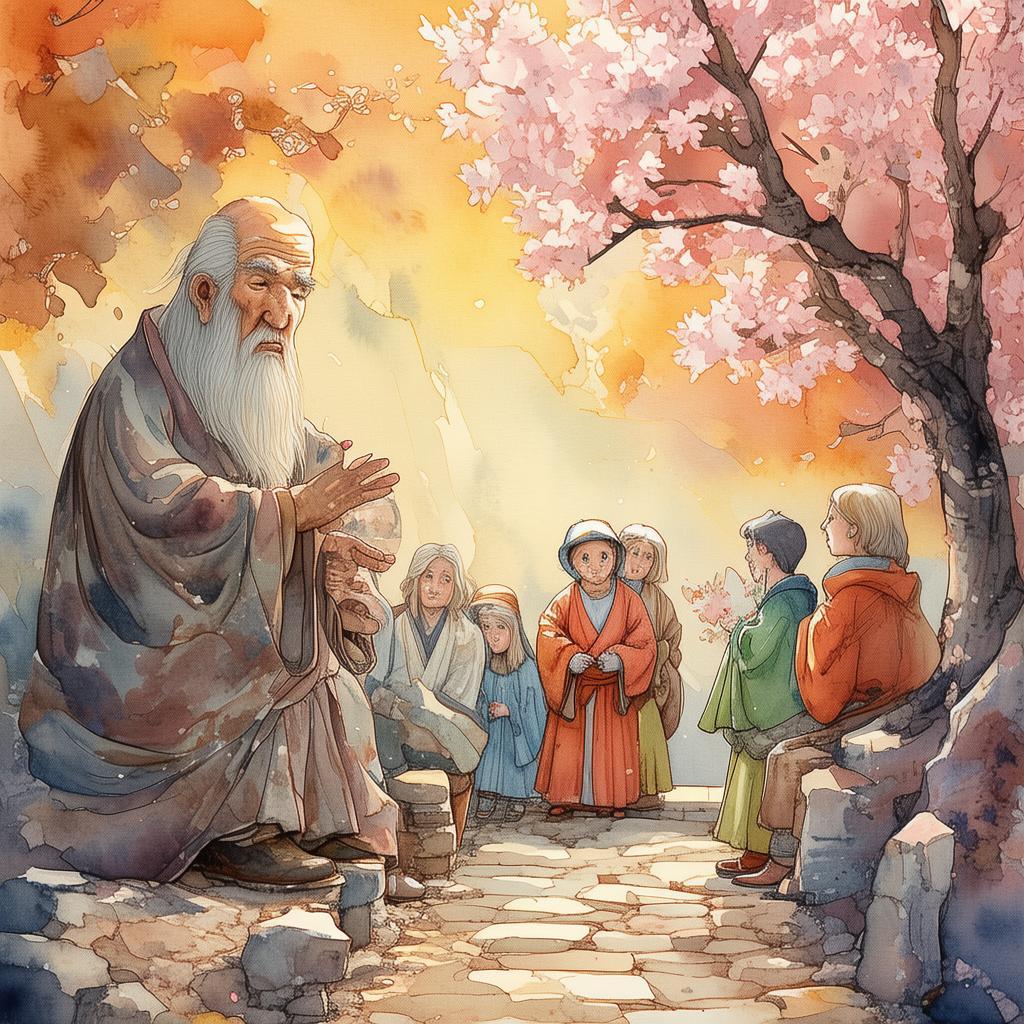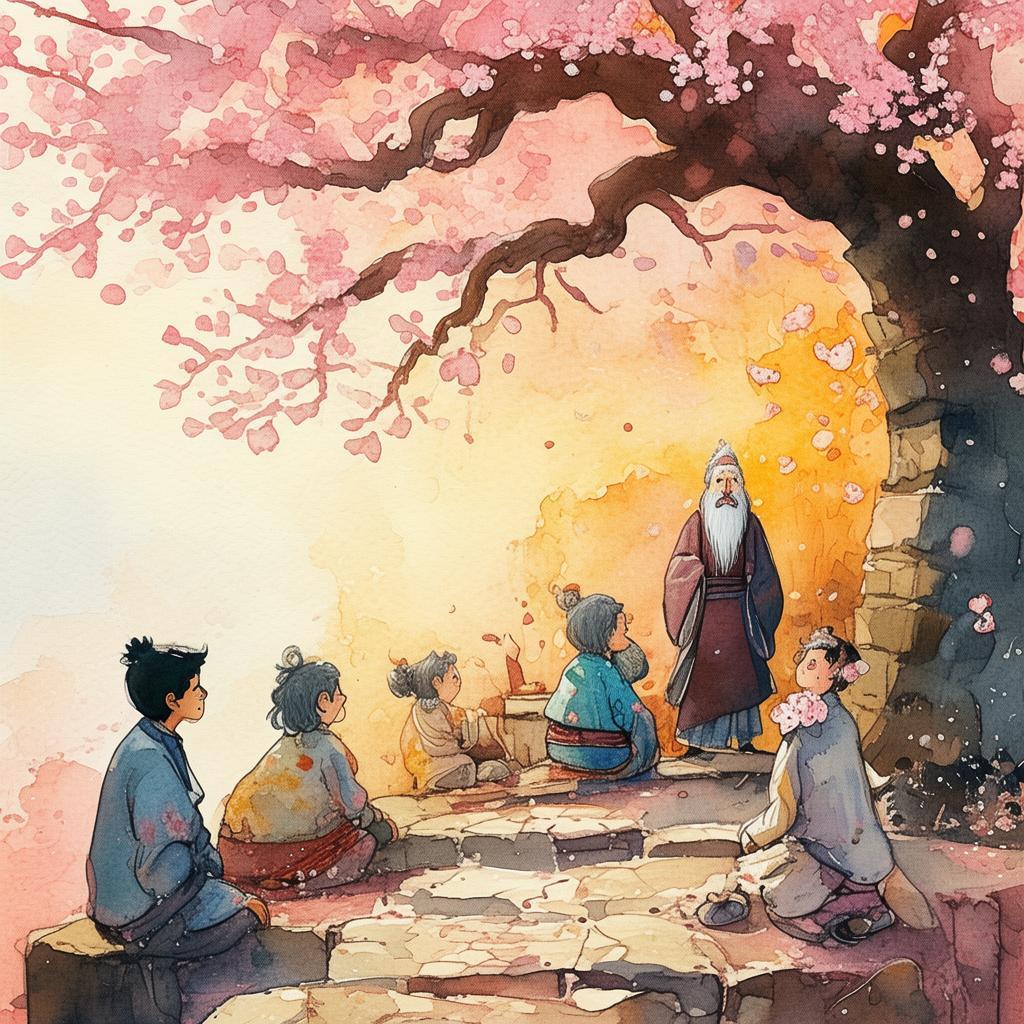Future Echoes: The Prophetic Platter
In the ancient Chinese village of Lingtang, the villagers lived by the rhythms of the earth and the wisdom of their ancestors. Each year, at the height of the summer solstice, the village elder, Master Li, would perform a ritual that united the past, present, and future. It was said that the ritual was a bridge to the cosmos, a way to tap into the ancient wisdom that could guide the village through the seasons.
That year, the village was preparing for the ritual when a peculiar boy named Ming entered their lives. Ming was not like the other boys in the village; he was curious, restless, and always seemed to have an air of mystery about him. His eyes held a spark that suggested he was more than just a boy.
The ritual began, and Master Li, with a mixture of reverence and excitement, prepared the sacred platter. It was said that this platter held the essence of time itself, a collection of moments from the past, present, and future. The villagers gathered around, their faces alight with hope and anticipation.
Ming, ever the observer, watched intently as Master Li placed the platter in the center of the circle. The platter was intricately carved with symbols and proverbs that told stories of wisdom and foresight. As the ritual reached its climax, the platter began to glow, and a warm, inviting aroma filled the air.
Without a second thought, Ming reached out and took a bite from the platter. The taste was indescribable, like a symphony of flavors from every era. The moment he did, he felt a strange sensation, as if time itself was swirling around him.
When Ming opened his eyes, he was no longer in the village. He was in a vast, swirling vortex of light and color, a place that felt both familiar and alien. The symbols and proverbs from the platter danced before his eyes, each one a story, a lesson, a prophecy.
Ming realized that he had eaten the future, and with it, he had gained a profound understanding of the past and the present. The proverbs, once mere words on a platter, now echoed in his mind, each one a guiding light in the dark maze of his new reality.
As he explored this realm of time, Ming encountered various characters from the future, each one a personification of a Chinese proverb. He met the "Silent Witness," who taught him about the power of observation; the "Wise Old Fox," who showed him the value of cunning and wisdom; and the "Unyielding Bamboo," who demonstrated the strength of perseverance.
One day, Ming met a figure who seemed to embody the essence of time itself. The figure spoke to Ming, and their conversation was filled with riddles and proverbs. The figure challenged Ming with a riddle: "What is it that has keys but can't open locks, has a lock but can't keep out the cold, and has a door but can't close it?"
Ming pondered the riddle and, with the guidance of the proverbs he had learned, realized the answer: "It is a mind, for the mind has keys to knowledge, but cannot unlock the mysteries of the universe; it has a lock of emotions, but cannot keep out the cold of sorrow; and it has a door of will, but cannot close it to the relentless march of time."
The figure smiled and said, "You have eaten the future, Ming, and in doing so, you have become a bridge between the past and the future. Use your knowledge wisely."

With this newfound wisdom, Ming returned to the village, not as the curious boy he once was, but as a man who understood the interconnectedness of time and the profound truths encoded in the ancient proverbs. The villagers were amazed at the changes in him; he spoke with a new clarity, his actions filled with purpose.
Master Li, recognizing Ming's transformation, decided to pass on the torch of the ritual to him. Ming became the new keeper of the prophetic platter, ensuring that the wisdom of the past would continue to guide the village into the future.
Ming's journey was not without its challenges. He faced a future filled with conflicts and uncertainties, but he knew that the proverbs he had consumed were more than just words—they were tools, keys to unlock the mysteries of life.
In the end, Ming realized that the true power of the prophetic platter was not in the knowledge it provided, but in the wisdom it imparted. It taught him that the future was not a destiny to be feared or embraced, but a canvas to be painted with the brush of choice and action.
As Ming stood in the village square, the villagers gathered around him, their eyes filled with hope. Ming took a deep breath and spoke, "Let us not be bound by the chains of the past, nor be lost in the fog of the future. Let us live in the present, guided by the wisdom of our ancestors, and create a future that is a testament to our courage and wisdom."
And with that, the villagers nodded in agreement, knowing that Ming's journey had not only changed his life but had also touched theirs. The prophetic platter, now in Ming's care, would continue to guide the village, a beacon of hope in the ever-changing tides of time.
✨ Original Statement ✨
All articles published on this website (including but not limited to text, images, videos, and other content) are original or authorized for reposting and are protected by relevant laws. Without the explicit written permission of this website, no individual or organization may copy, modify, repost, or use the content for commercial purposes.
If you need to quote or cooperate, please contact this site for authorization. We reserve the right to pursue legal responsibility for any unauthorized use.
Hereby declared.

